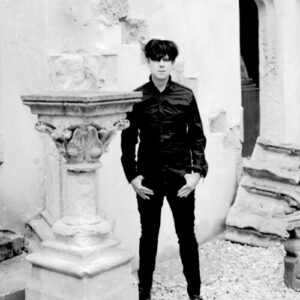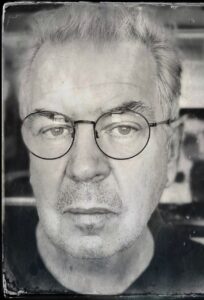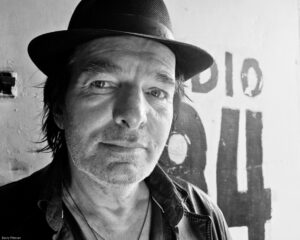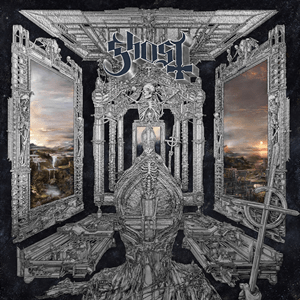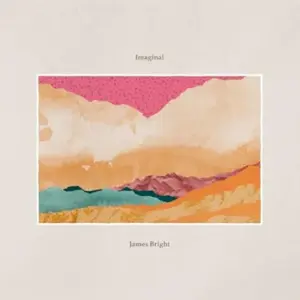Kira Roessler was born in June 12 1961 to Newhaven, Connecticut, and after a wandering period, established with her family to Los Angeles. She was introduced to the music parallelly her brother Paul, developing a formation in progressive music which then encountered the explosion of punk to Western Coast represented by Germs, X, Alley Cats, The Zeros, etc… In sight of her sequent experiences, her behaviour on music can be defined meditated and disenchanted, in contrast with the general weird and fashionable character of first years of lunk rock, associated with the Masque club epicenter. Indeed she took her part in the masters of heterodox hardcore punk Black Flag, substituting one of founder and main members Chuck Dukowski; the quartet (which was also formed from the iconic vocalist Henry Rollins, the drummer Bill Stevenson (Descendents) and obviously the chief and guitarist of Black Flag and SST Records Greg Ginn) produced interesting sounds and releases (going out sonically even more the hardcore genre) but it was a stressing period for Kira under the disciplined and Stakhanovite direction of Ginn, and then she decided to disband after a continental tour (between USA and Canada) with a malfunctioning van and the relative uncertainty of returning.
The next important Kira’s project was Dos, born in 1986 and formed with her then-boyfriend and iconic DIY bassist and vocalist Mike Watt (Minutemen). This bass duo had its course sequently a shadow casted on all the SST Records roster with the Dennes Boon’s death (December 22, 1985), another main character in the experimental punk rock scene (from San Pedro and Californian South Bay), with his fervid creative role in Minutemen band as author, vocalist and guitarist, and his affiliation with SST and his emblematic friendship with his dear mate Watt in Minutemen. Dos take life in an extemporary way after a little bit time before the Boon’s death happened in a tragic car accident, and the project was a way to free in a cathartic sense the Watt’s deep sorrow of that moment. The duo published three album (Dos (1987), Justamente Tres (1996), Dos y Dos (2011)), one EP (Numero Dos (1989)) and one single, The Bob Lawton (1991) which comprehend the first track Imagine That, then included on Justamente Tres, and the second one which takes the form of a blues-harmonized piece with articulated rhythmic structure, that is the Dos typical musical purpose, where, we could say, a standard song follows a complex rhythm with the creative, fervid energy of a jamming improvisation.
Returning to one of the previous moments of her career, when she played with Black Flag was already enrolled in UCLA to follow lectures of Informatics, electronics and economy. This parallel activity will converge in 2016 the winning of the Oscar nomination for Best Sound Editing, given her work in Mad Max: Fury Road as sound editor. Here it returns a way to combine her technical competence similar to her bass playing with the oblique imaginary of the experimental punk sound of Black Flag or the above-mentioned movie Mad Max: Fury Road.
Finally, in November 21, 2021 the solo album by Kira was published for Kitten Robot Records (a label from Los Angeles which is affiliated with the Kitten Robot Studios headed by Kira’s brother Paul Roessler). The record is named simply “Kira” and is signed by introspective, soft sonorities, with abstract rhythmic patterns.
We will analyse in depth many of these topics with the following interview with Kira, and a track-by-track of Kira solo album.
You began as a musician in several bands, like Sexsick, Twisted Roots and DC3, in the sign of classic or progressive punk. You have demonstrated a maximalist intent in your music, embracing more spontaneous and visceral sonorities in a personal way at same time. How did these different intentions combine between themselves and did they develop in most recent projects?
“I have been playing in bands since I was 16. I would say that I did not have a musical “style” during that time. Twisted Roots and other bands I have played with were basically lead by the person writing the songs … and I was playing in a way to support their music. I did not bring my own style into any bands until Sexsick. In Sexsick I was also a songwriter and tried to express what was my own limited rock sensibility in my songs. I have never been a natural song writer… they come few and far between.
“So to answer your question the band leaders I played with have always influenced me. I always try to do what is best for that music, that band, and mold my playing to that music. In Sexsick and Dos I started to have more influence over the style of music and my rock sensibility combined with my more minimalist tastes. When Mike and I started Dos we felt that with the two basses we needed all the space that there was. We did not need added instrumentation. We loved the bass and wanted to celebrate it … but that involved finding ways to move into the spaces that the other places was leaving. The interwined bass lines that never stepped on each other were key.”
“So on my solo record I got to completely explore finding holes and spaces in the music…. And choose what to add and subtract. It has been an evolution.”
Black Flag, your most famous project, mixes fusion experimentalism with metal energy. The collaboration was tiring under the control of BF chief, which is the principal owner of SST Records Greg Ginn, which created an obscure and stressing context, although the general ambitious music product. The Black Flag period signs different sonorities with the more recent ones with Dos and solo career, but a certain obliquity is also present in your sonic past. Can I ask if you feel a even recondite influence from that past and the relative band with hardcore origins?
“Of course I am very influenced by all the bands and music I have been involved in. I was a punk long before Black Flag and in a way I just got to celebrate that during my time in Black Flag. But it was not a creative time. I was usually playing what the songwriter wanted me to play. And I was glad to do it because the best bass player is the one that does what is best for the band. That time in my life has given me great strength, great memories, and a sense that I could do anything I tried.”
Let’s talk about the Black Flag EP Process Of Weeding Out (1985, SST). Your effort in this sound is very precise and efficient, and it is original in Black Flag poetry, in a progressive/fusion way (in a broad and lo-fi sense). Your bass lines are periodic, clear, powerful, and magmatic too in some points. Anyway, at these times the Black Flag ensemble was a war machine with the nihilistic attitude of its members; these past troubles with justice were sedimented in their memories (Ginn especially), generating a collectively personal sound which was heterodox and hybrid in the hardcore context, and contrasting with everything (for example the traditional fans of hardcore/indie audience) in an idiosyncratic way. Can you talk about your experience with this singular work? How was the experimental sound of Process Of Weeding Out born? What were your roles of those members from the point of view of writing? What was the real relationship with that context?
“The first time I played with Black Flag was just with Bill and Greg. They had been playing these instrumental songs or riffs as well as playing songs with Henry. My “tryout” was, in a way about how well I could hold down those riffs while Greg (and Bill) did solos over them. Greg felt it was a priority to play a lot of hours so we always praticed with Henry and without him… either free form jamming or using riffs that Greg wrote. The Process of Weeding Out is a selection of those songs/riffs.”
Let’s talk about your project with Mike Watt (Minutemen, Reactionaries, Il Sogno Del Marinario, etc…). The sound of this bass duo is permeated by an introspective and rhythmically sharp sound, where the polarities between day and night, consonance and dissonance encounter between themselves The duo was born immediately after the tragic event of the great author, musician and Watt’s mate and friend Dennes Boon, and we can feel the relative attitude in the duo sonorities at the beginning. Most directly, how was the idea of bass duo born? How did its original and heterodox idea happen to mix rhythm and melody in one instance?
“I had been recording bedtime stories for my nephews and playing two intertwining bass lines under the stories. When D Boon died… I was afraid Mike would stop playing. I just tried to get him to play in his room. There was no goal other than to keep music alive in his life. Since we both love the bass, and do not feel limited by it, it felt natural to keep our little music project without other instruments. This gave us the space to explore both filling holes and leaving them… creating that syncopation between the bass lines took a lot of time. Each Dos song represents quite a bit of work – writing the bass lines to almost fight each other for dominance and always come out even. Both of our personalities pushing to be heard through our basses. Bass players are always rhythmic in nature … by leaving out other instruments we could combine rhythm and melody without interference.”
First record by Dos was published in 1986 by New Alliance Records, and we see the duo in their every, general shades. Talking of tracks: The Rabbit and the Porcupine is more centripetal in its flowing, recalling rounded and stylized bass lines. Instead Snapshot is more fugal and mathematical, describing diversified and intensely creative patterns. Slow Little Turtle is more lyrical and sweet and sour in its melodies, but angolous in the rhythmic part as ever, and with an opening to a climax onto the end. Forever is characterized by more atonal and disharmonic bass riffs, which instill a mature and renewed sense of music in its dimension. In Funk One there is a rhythmically catchy and oblique sound, syncopated in certain parts. Taking Away The Fire has a bittersweet and sung sonic course like an angular lullaby, massive in its musical consistency with the frequent use of harmonics.
“It really comes back to how the song began – this tells the story of why it sounds how it sounds. The Rabbit and The Porcupine and Slow Little Turtle came from the bedtime stories with the same names – I recorded myself reading the story and then wrote two intertwining bass lines…. The stories being the inspiration of the music! Snapshot and Forever were written by Mike so have their own unique perspective. Funk One and Taking Away the Fire were some of my first honest songwriting attempts for some time. Dos was in an expiremintal phase finding its sound. We used different starting points and it varied things wildly!”
Another Dos release for New Alliance is Numero Dos, an EP published in 1989. Don’t Explain, originally a piece by Billie Holiday and Arthur Herzog Jr., has a more distended structure than the Dos production in general, evoked by the derived song, in an oblique form. Heartbeat, a piece by Watt, has a catchy development in the rhythm, which insists on that sonic element. Pacific Coast Highway, your re-interpretation of Sonic Youth piece from Sister, has a more plastic form with any obscure reverbs recalling the fourth SY album. I Worry, My Son, sung by you, is more consonant for his main melodic part with complex and rhythmic bridges or interlude. Silence follows the same structure in a more rarefied way, with more suspended and reverbered, or rhythmically complex elements another time in the bridge. Number Six, the last track, is more fugal and follows an adrenaline and perpetual descent in your rounded imaginary with the associated elastic percussionism. How was the idea of this record born and did it develop?
“This was the logical next step for Dos – still playing with songs born from different sources. Billie Holiday has been my idol since I was quite young. It felt very honest to do a tribute to her. Sonic Youth were friends with Mike and he interpreted their song for us. I worry, my son was a poem written by someone I worked with in my computer job and I took on the challenge of writing music to his poem. I do have a classical piano background so occasionally something I write (like number six) might hint at that???
“Mike was, of course, working on other musical projects and I had a full time computer job – so songs came few and far between. We played gigs occasionally but I would say Dos did not always get a lot of attention. Fore this reasoin the records are very spaced out in time.
Justamente Tres (Kill Rock Stars, 1996) flows through sweet and consonant lines and soft melodies, and without losing the sharp/angular attitude in the rhythmic aspect. A particular aspect, there’s not the presence of Mike Watt’s voice except a whispered contribution in Minutemen vaporous re-adaptation of Do You WantNew Wave Or Do you Want The Truth?. Dream of San Pedro by Watt has jangle sonorities, playing with a joyful rhythmic part and an open and melodic purpose. Imagine That, a standard by the Texan country author Ernest Tubb, has a soft structure with its stomped rhythm. Here you wrote Excerpts From A Captain’s Log, a track with soft melodies and complex rhythmic patterns at the same time, where it appears a double-faced creativity; moreover we can hear a sample of a sea when the music is “rough” as its background, and it misses in the main melodic part, when a sonic balance is achieved. To Each His Dulcinea composed by Mitch Leigh, from the Man of La Mancha soundtrack (inspired by the Miguel Cervantes’ Don Quixote), is a valzer with modal changes in tonalities and a multi-faced bass line. Number Seven, written by you, is in 7/8 and many complex rhythmic figures appear in a dynamic way. Finally the last track, Number Five, another time written by you, has a disharmonic form where the bass parts are out of sync, and in the following, central part they harmonize either a more strong and dissonant energy take the place in the instrumental refrain. In the end, how did this lyrical form taked life much more in the Dos discography?
“It is a very honest expression of who we are when you look closely …. Mike paying tribute to D Boon … his town San Pedro … and his father – a chief in the Navy (captain’s log)….
“My father sang the Man of La Mancha songs to me when I was a little girl. The story of Don Quixote always had special meaning to me.
“Mike picked Patsy Cline as a singer (she performed Imagine That) that I should try to interpret….
“Number Seven and Number Five – written specifically for Dos as instrumental celebrations of rhythms and notes as only two basses can play!!!
“You see we are just playing from our hearts which have many different things to say?
“And the title: Justamente Tres – at that time we thought we might not make any more record sas our marriage had ended. We did not know what would happen next.”
https://www.youtube.com/watch?v=sw0nWpZ6_CQ&t=3s
In 2011, after fifteen years from the previous album Justamente Tres, Dos Y Dos was released for Clenched Wrench and Org Music. The record, mostly instrumental, is in the name of a more nocturnal and introspective creativity than previous Dos records, where the minimalism of bass lines domains above the atonal and angolous sound. Number Nine is structured in melodic up-and-downs, most specifically an oscillation around an ideal sonic focus with your bass lines, developing in diversified divergent and fugal sounds, then returning at the end with the initial approach. The Winds Of May has a more lyrical, standard-ish approach with rhythmic creativity. Uncle Mike describes cubist movements, like an avant garde painting, playing with blues harmonies, becoming softer at the end with a cloudish structure. With a flowing of barking by lap dogs, Number Eight has involving, hospitable harmonies where it seems the relative two basses communicate in a friendish, comfortable conversation; indeed everything generates sunny situations but weird and funny at same time, with the samples of dogs and the bass contribution. Frantic is more disharmonic and atonal in its reproducing familiar instances and Song For Poe gives a choral-ish structure in the rhythmic part, converging in a free or mathematical-like craftsmanship. At the end, Om Om Om is a game between constant and rarefied/suspended part, offering a majestic conclusion through an energetic/relaxed playing and in the sign of general style. What were the intentions with Dos Y Dos, and how was this introspection born?
“As you said these songs evolved over a long time – Mike and I trying to continue our band once our marriage was over. Mike’s sensibilty regarding dos was to move more insto instrumentals and more into more sparseness. And still distinct because of how they are written: Winds of May, Uncle ike, Om Om Om, New Year’s Waltz, and Only You will Know starting and stemming from Mike’s head. Frantic, Ties to Bind, Frantic, Number Eight, Number Nine, and It Turned Cold from my head. Song for Poe was a combination of two more songs from the series of bedtime stories which evolved as my nephews grew up. And a tribute to Selena – No me Queda Mas – because I admired her and she was killed before many got a chance to hear her. In Number Eight my amazing dog Hombrito is the lead singer (I edited his sounds into the music)… in the background are a pack of dogs I recorded at the dog park who would howl as their pack leader signaled them to… Number Eight also became our “music video”…”
“Mike and I were just treating our band as an entity – a band with records and a video – even though still both of us were quite busy with our individual lives.
“I did not have another music project for years and years that actually released songs. I did have a virtual band which built songs over the internet, each of us playing in a different place. I wrote a lot of bass lines for this and eventually wrote more and more of my own songs for the virtual band to play.”
Your solo album, Kira (Kitten Robots Records, 2021), where your have the roles of singer, bassist and producer, and with the contribution of Petra Haden (violin, voice), Paul Roessler (keyboards, production), Dave Bach (drums) and Glenn Brown (guitar), is permeated by the Dos’ similar atmosphere with a further lyricism and a personal experimental attitude. We will talk about it through a track-by-track with any general question.
How were your album and its introspective and heterodox album born? How did the idea for a solo work happen?
“As I was describing the virtual project I had been involved in for years started to also include my own songs. Glenn, Dave, Paul and I worked on these songs over the years…. And I then selected a set that told a story to include on the record. So the evolution to solo work came from the work we were already doing. I guess I just found my voice a bit more as time went by. Now I always have a set of songs I am working on in my room. And Paul and I get together and work on things when time permits. He had been pushing for some time that I gather a set of songs and release it. Then one day when he asked – it was the right day.”
I can hear a certain correspondence with the bass duo Dos for its emanated lights and sonic climate, where it encounters dynamism, blue atmosphere, complexity in the rhythm and melody. Is there a certain idea of continuity between the two relative projects, or only a spontaneous influence?
“Intertwining two bass lines started with the bedtime story tapes I described, and then continued with dos in a more collaborative way. But in my room alone working on songs I often write two intertwining bass lines. It is just how I express things. An extension of who I am.”
The following part will be a track-by-track on your self-titled, solo record.
Silently is formed by several whispered words and a simple comfortable atmosphere in its melodies, where the synth gives an easy-listening touch, alien for its context. How was its dreamy and more linear concept born?
“The songs usually start with a strong emotion or idea. This one was separation from an incredible bond… having to walk away … what is left behind… what it feels to be parted. It isn’t something in words but in silence… the ache of being apart. Then the bass lines and voice are a tool to express.”
Avoiding has a baroque pop structure, where the melodic lines entangle between them; in certain points different voices are settled into a counterchanted form through a crescendo in the second half of the track, instilling an idea of lyrical climax. How was the idea for this track born?
“I had a part of the initial bass line written… and then one day my friend Petra Haden came over and we just opened ourselves up to this starting point. She played the violin in a way like I might have a second bass but with her own musical sensibilities… The singing evolved over time… I laid something down… she added a response (in a way) … A collaboration of counterpoint… like there was in dos, but with an alternate very unique personality in Petra.”
Trance follows complex rhythmic patterns between a not-balanced beat of drums and an oscillating bass line, with a certain oblique strumentalism, in a non-Euclidean sense. Sometimes there are different climaxes or, we could say two bridges, which instill a suspended feeling. How was this track and its complex mathematical structure?
“Well I am a logical and calculating person … but how that translates to song structure is a mystery to me. All I can say is that it feels right … I tweak the song until the structure and rhythm and melody say what I am trying to say. We could say double verse then chorus with no bridge…”
Worse Than Rude is in 6/8 time, and in which appears a synthetic timber of a violin, drums and obviously bass lines and the vocal part. The development is constant and more classic, and the synthetic part instills something lyrical, and alien as I refer to in the previous first track. How does its more ordinary structure happen?
“Ah the magic of the synthesizer – the strings in this song are all Paul on a keyboard. And I cound the song in 4 … but playing with rhythm is a strong theme in my music and Dave (the drummer) often puts the 1 of the measure somewhere other than I would… his parts surprise me all the time. And yes – I was trying to do something more straight rock to support the feeling I was expressing … more anger and disappointment than the sadness in other songs…”
Unsolicited Advice develops in the same above-mentioned sonic territories; the track districts in up & down melodic movements, where the variety is more dynamic, although the flowing is slow and the tonality of the harmonies or modes is synesthetically like the blue color. So how did this variety and attitude in the writing happen?
“The dark slow effect helps me show the quiet rage… the kind I’m not allowed to let out… that can surprise me in its intensity. The words try to put language to the feeling.”
Another track in 6/8 is Let It Go, in which syncopated rhythm and softly out-synchronous electronic sounds appear. Moreover this piece follows mysterious and wavering guitar riffs, expressing the flowing in a suspended manner. How did these hypnotic and heterodox characters happen in this track?
“This one is a good example of how something can rhythmically change when other folks interpret. I would say the bass line is in 3/4. As Paul interpretted the rhythms the 6/8 feeling started. I still count the song as 3… And Glenn Brown has found a way to have the guitar play with the rhythms as well. By not being in the same room when we create out parts – they are not influenced by my thoughts… just the bass line. I take a similar attitude when I write the second bass line. Just react to what is there. This song started with the singing and melody – which is unusual in my song writing … I started it while walking my dogs. Usually there is an idea and then a bass line and then the singing and melody.”
The Ghosts, in 6/8, uses sweet and sour melodic lines and a more ordinary structure in its writing. Sometimes the drums part becomes more complex in certain points, and everything is permeated by a lighting lyricism with an introspective attitude. How were these elements and its classic imposition born?
“Starting with a feeling again… and the bass line creating a smooth, dark space to sing the sadness into. As I have said the song structure somehow makes sense because of the feelings going into them. It’s difficult to say why this feeling asked for more simplicity and repetition … But the thoughts are swirling and closing in and the way out is to write them, sing them, put them outside of me for a time.”
In It Can’t Be, bass tracks entangle between themselves in a rhythmic and harmonic way, where the violin part makes the melodic and principal part. Another time the atmosphere is nocturnal and ethereal in its harmonies and rarefied consistency, where the creativity is oblique but bittersweet as before. How did this complexity happen?
“As you can imagine… before the violing this song was just spacious and dark… basking in its sadness. How Petra knew when I played this for her to find this haunting melody which never stops is a mystery. Collaboration is like that – if you give a player space to work in – amazing things can happen. How do you express the feeling of losing a great love?”
What’s Left is structured like a minimal stomp, permeated by blue shades and warm tonalities, where there are momentaneous bittersweet istants in the melodic part as bridge, and softly incisive and more angular bass phrases on the end. How did these different moments in your composition happen?
“This song does sometimes feel like three pieces – a sort of jazzy into and then it kind of stops and just assists in the verse. ThenI was given the impression that these cards would be sent at least near Mother’s Day. They arrived over a week early. The chorus sort of builds while it explains. The bridge then hammers it home – all that is left of this great love… Lying there… being… but not helping…”
In The Quiet the dark and warm atmosphere takes the form of epiphany with an angular and disharmonic melodicity and a sharp sense of rhythm, in which everything of these concludes the album. How was this idea of end angular and comfortable born?
“As time passes … the loss and grieving only shows up randomly in quiet moments when I am by myself. So again – how to say “all is calm until it hits” … or something.”
Interview with Kira Roessler
REFERENCES:
- STEVIE CHICK – “Black Flag – I Pionieri dell’Hardcore Punk” (Odoya, 2012, trad. by Stefano Focacci from ”Spray Paint The Wall”)
- ALEX COHEN – “Dos: Veteran Punks With A Low-End Theory” (NPR, 2011)



